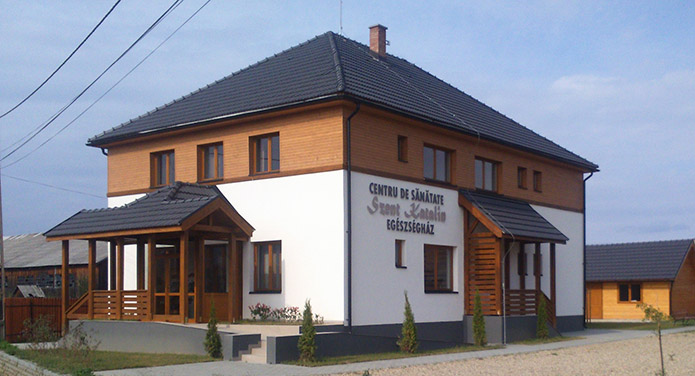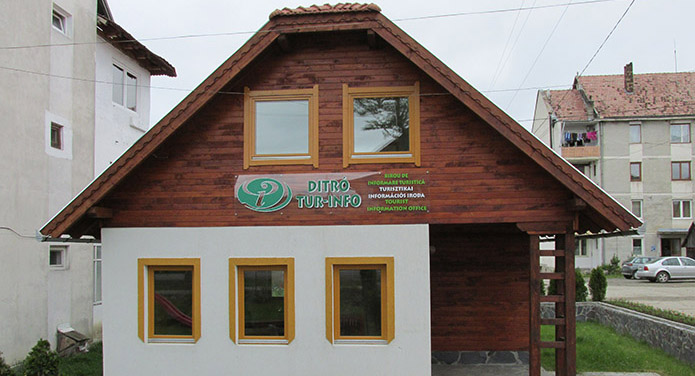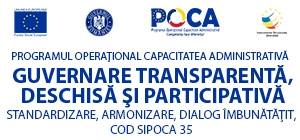General presentation
Ditró is lying on the northeastern edge of the Gyergyo basin. The village is situated at 742 m, its highest point is Piricske hill-top (1,543 m), the Cengellér on east and on north and northeast the Taszok and the Közrez peak (1,492 m).
Ditró’s adjacent locations are: on north Borszek and Hollo, on east Tölgyes, on south-east Gyergyó and Szárhegy, on west Remere, Varhegy and Salamas. The area of the municipality is 11,449 hectares and a population of 5,487 people, 2,190 family farms. Today, therea are two villages which belong administratively to Ditró: Orotva and Cengellér.
The village is crossed by the national road No. 12, in the direction of Gyergyó and Marosheviz, the county road no. 127 which make the connection with Tolgyes and road no. 153 C towards Remete. Brasov is accessible by train from Marosheviz direction.
Ditró is a sekler village, 98% of the inhabitants speak Hungarian. According to traditions, the inhabitants of the village are named Csibi, Bajko and Mezei. The name of the village suffered changes over the centuries, nowadays there are several assumptions concerning to the origin of the name. The settlement was first mentioned in 1576 as Gyitro, when the village hadregistered 500 inhabitants. In 1576 is known already as Ditró and in 1776 as Ditrófalva.
In 1995, the official name version is Gyergyoditro.
Population in numbers
The register from 1567 mentions 500 souls.
In 1850 there were 3,398 persons registered, in 1867 there were 5,060 persons, in 1880 there were 5,346 persons, in 1890 there were 5,940 persons, in 1901 there were 6,563 persons and in 1910 there were 6,903 persons.
Between the two world wars, they took several times census of the population, according to the 1930th official Romanian count data there were counted 6,803 people, while in the religious census from 1935 there were 8169 registered inhabitants, in 1992 there were 6,772 persons, in 2002 there were 6,300 and in 2011 there were 5,487 people.
The evolution of the village borders structure
In the 18th – 19th century on the border of Ditró has formed settlements which extended more far the village boundary at the 19th century. In the 18th century Borszék, Bélbor, Tölgyes and Holló belonged to Ditro. These settlements, in the 19th century detach from Ditró and as outskirts remain Orotva and Cengellér. Nowadays the image of Ditro shows a typical set of settlements, with strong branching along the main roads.







